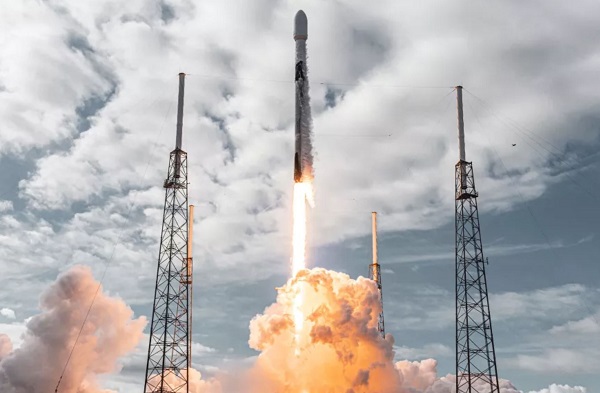 Launch of SpaceX Transporter-2;
Credit: SpaceX
Launch of SpaceX Transporter-2;
Credit: SpaceX
Kleos Space S.A., a Luxembourg-based space-powered Radio Frequency (RF) Reconnaissance data-as-a-service (DaaS) company, has announced the successful launch of its second satellite cluster, the Polar Vigilance Mission (KSF1), aboard the Spaceflight SXRS-5 / SpaceX Transporter-2 Mission on Wednesday 30 June 2021.
Deployed into a 525 km Sun Synchronous orbit from Cape Canaveral in Florida (US), the Polar Vigilance satellites further enhance Kleos’ global coverage and data collection capability and broaden the coverage range of Kleos’ first cluster of four Kleos Scouting Mission (KSM1) satellites.
Satellite developer, Innovative Solutions In Space (ISISPACE), is performing the Launch and Early Operation Phase (LEOP) support, which includes commissioning of all spacecraft systems and manoeuvring the four satellites into operational formation.
Miles Ashcroft, Chief Technology Officer (CTO) of Kleos, commented: “Despite the schedule for the KSF1 satellites from placing the contract to launch being exceptionally ambitious, Kleos’ second cluster has been launched within the time window allocated and on budget. We must acknowledge ISISPACE and Spaceflight as well as our Kleos’ technical team’s work [...]. Kleos is well on track to see its third constellation in orbit by the end of this year. With each cluster launched, coverage and volume of data increases, commensurately increasing our revenue opportunities”.
The KSM1 Scouting Mission satellites were launched into a 37-degree low earth orbit in November 2020 and were the world’s first four satellite cluster flown in a formation for precision geolocation capability. Data from the KSM1 Scouting Mission is being delivered to customers and the satellites are being used to develop many space and ground segments for the company. Early adopter revenue has commenced, with repeat subscription-based revenues delayed but anticipated to commence in the third quarter and increase further in the fourth quarter of 2021 with the addition of the data from the second cluster, Polar Vigilance satellites. The constellation will grow further with the addition of Kleos’ third satellite cluster: the Polar Patrol Mission, which is on track for a late 2021 launch aboard another SpaceX Falcon 9.
Kleos satellites collect data that is then processed to detect and geolocate radio frequency activity to improve the detection of hidden and illegal activities including piracy, drug and people smuggling, border security challenges and illegal fishing as they can detect transmissions, independent of other systems such as those used in active tracking or when imagery is unclear or targets are out of normal aircraft patrol range.








